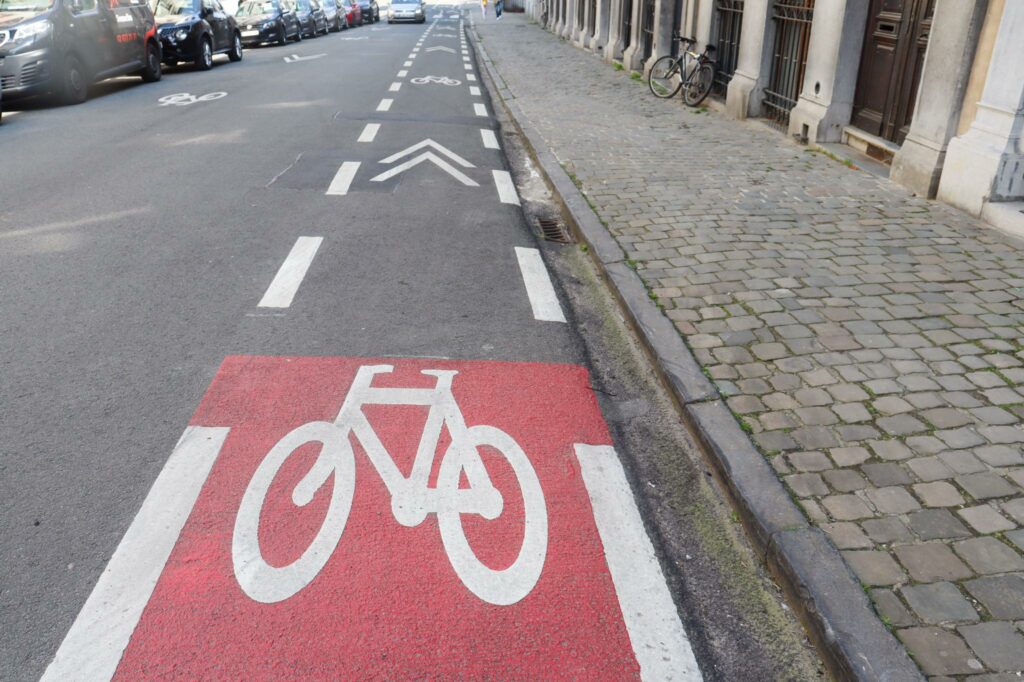The growing diversity of bicycles on the nation’s cycle paths is leading to frustration and even confrontation between faster and slower users, according to the Flemish Fietsersbond cycling association and the national road safety institute Vias.
Better and wider cycle paths can offer a solution, but courteous driving behaviour between cyclists is also important, according to both organisations.
Good weather traditionally brings more cyclists out on the roads. That has been the case for a long time, but unlike in the past, these cyclists can now differ greatly from each other. One may ride 15 km/h with a 'normal' bike, the others tear past at 45 km/h on their racing model.
In addition to an increased aggressiveness between cyclists and motorists, the Fietsersbond also sees an increase in frustration between cyclists. "The diversity of bicycles - ranging from racing bikes to e-bikes and cargo bikes to tandems - leads to frustration on too narrow cycle paths because the fast cyclist cannot overtake the slow cyclist," spokesperson Wies Callens told VRT.
Related News
- Popularity of cycling riding high as Brussels Mobility launches new campaign
- Brussels pedestrian zone overrun with bikes and e-scooters
- Making cycling easy: Brussels drops permit requirement on new bicycle lanes
This is confirmed by Stef Willems of road safety institute Vias. "It used to be simple, you had a classic city bike and that was it," he explained to the news outlet. "In the past ten years, a much greater diversity of bicycles has emerged, while the cycle paths themselves have usually not become much wider. As a result, you get a conflict between faster and slower traffic."
According to figures collected by Vias, the number of accidents due to collisions between cyclists is also increasing, while the number of accidents between cyclists and motorists is decreasing. In absolute numbers, there are fewer victims due to collisions between cyclists, but that can partly be explained by the fact that these accidents are reported less often.
"If you have two cyclists crashing into each other, you're not going to call the police,” said Willems. “That makes reporting difficult."
In any case, the different types of cyclists on the cycle paths can cause unease for many. "It is not pleasant for the cyclist who is driving at a normal speed, to be overtaken by someone on a racing bike going past at great speed," he explained.
Wide cycle paths
A first possible solution is therefore obvious, according to the Fietsersbond and Vias. "Good cycle paths are safe and sufficiently wide enough so that they can literally offer the various users space on the road," explained Stijn Daniels of Vias.
Those wider cycle paths are already in place in some neighbourhoods, and at Vias, they also note that more investment is being put into providing more. Nevertheless, there is still room for improvement. "Of course, we have – and we all know this – cycle paths in Flanders that are not good enough for ordinary cyclists, let alone to handle all those new groups and increased numbers. There is still a lot of work to be done there," said Daniels.
Additionally, according to Vias, it is important to make logical layouts on the road. "You have to group the traffic according to the speed at which you drive," said Daniels. "The cycle path should preferably be reserved for the ordinary bikes, the city models and the electric bikes that do not go too fast. And the faster vehicles, including racing bikes, should use the road."
Racing bike riders and speed limits
At the moment, cyclists with a racing bike are always allowed to ride on the cycle path in places where the speed is limited to 50 km/h – when this is indicated by a traffic sign D7, a mandatory cycle path, or with road markings. On roads where you can drive faster, they have to ride on the bike path.
"On those roads where the speed is higher, it is logical that racing bike riders take the bike path, because otherwise it becomes dangerous with the car drivers. It is then better to neatly separate those cycle paths from the road and make them wide enough so that one cyclist can safely overtake the other," Daniels added.
But perhaps the most important tip, which we can all work on ourselves, is courtesy, emphasised both organisations. "What we expect from a motorist compared to a cyclist – namely that he overtakes the cyclist with sufficient lateral distance and only when it is safe to do so – also applies to a faster cyclist compared to a slower cyclist," Willems said. "The consequences of a collision may be less serious, but it remains a form of mutual respect."

